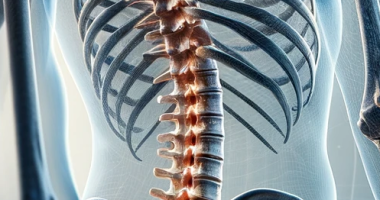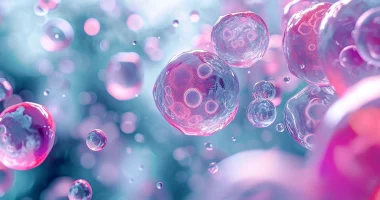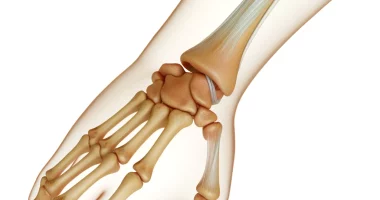Cystic echinococcosis
Definition
Lung echinococcosis is a form of anthropozoonotic infection caused by the larva of the echinococcus chain and leading to specific cystic lesions of lung tissue. Manifestations of pulmonary echinococcosis may include chest pain, dyspnea, persistent cough, urticarial rash, and itching; in complicated course – copious sputum with blood and pus, fever, respiratory disorders, severe anaphylactic reactions. Diagnosis is established by radiography and CT lungs, sputum microscopy, and serologic blood tests. With pulmonary echinococcosis, removal of the parasitic cyst, lung resection, and lobectomy in combination with antiparasitic therapy is performed.
General information
Echinococcosis of the lungs – the most dangerous helminthiasis that develops when infected with eggs of the tapeworm – Echinococcus, accompanied by the formation of parasitic cysts in the pulmonary parenchyma. Invasion of the lungs is observed in 15-20% of all echinococcosis cases, 70-80% of liver damage, and the rest – the heart, brain, and other internal organs. Echinococcosis of the lungs is most often registered in regions with dry, hot climates and developed cattle breeding.
Causes
The causative agent of pulmonary echinococcosis is the larva of the tapeworm Echinococcus granulosus, which belongs to cestodes. Sexually mature individuals parasitize in the small intestines of animals of the dog and cat orders – dogs, wolves, foxes, Arctic foxes, etc. The larvae are parasitized in the small intestines of animals in the dog and cat orders. In the larval stage (parasitic cyst), echinococci live in the tissues of intermediate hosts – paired and unpaired ungulates (sheep, cows, horses, deer, pigs) and humans.
Humans are infected with Echinococcus eggs excreted in the feces of sick animals, usually through contact with wool, milking, shearing sheep, dressing hides, and the alimentary route through consumption of unwashed, contaminated vegetables, greens, and water. From the intestine, echinococcus germs hematogenously disperse to the liver, lungs, and throughout the body. In respiratory infection, oncospheres are fixed on the walls of the bronchi and then penetrate the lung tissue, forming vesicular structures.
Classification
Lung echinococcosis can be primary and secondary (metastatic) and develop in any part of the lung but predominantly affects the lower lobes. It can form unilateral or bilateral, single or multiple echinococcal cysts that are small (up to 2 cm), medium (2-4 cm), or large (4-8 cm or more) in size.
Symptoms of pulmonary echinococcosis
Clinical pulmonology distinguishes three stages of pulmonary echinococcosis. In the initial period of the disease, from the moment of the larva’s fixation in the lungs to the first signs of helminthiasis, a latent course is noted. Slow growth of the cyst does not bother the patient, but sometimes, there may be malaise of an unclear nature and increased fatigue.
Clinical manifestations of pulmonary echinococcosis are usually observed 3-5 years after invasion with a significant cyst volume. There is blunt chest pain, possible dyspnea, a persistent cough (first dry, then wet, with blood streaks), and dysphagia. In patients with pulmonary echinococcosis, allergic phenomena may occur in pruritus, urticarial rash, and bronchospasm. At echinococcosis, atelectasis of the lung may develop.
The terminal stage of pulmonary echinococcosis is characterized by severe and life-threatening complications. The cyst suppuration proceeds with symptoms of a lung abscess. The cyst’s bursting into the bronchus is characterized by a sharp attack cough with copious watery sputum with blood and/or pus, fragments of the cystic shell and small daughter capsules, cyanosis, asphyxia, and severe allergic reactions.
Breakthrough of the cyst into the pleural cavity is accompanied by the development of pleurisy, sharp deterioration of health, acute pain in the affected area, chills, fever, respiratory disorders, risk of pyopneumothorax and pleural empyema, anaphylactic shock and death. When the cyst empties into the pericardium, cardiac tamponade occurs. Clinical symptoms of pulmonary echinococcosis may be combined with disorders caused by extrapulmonary localization of parasitic cysts.
Diagnosis
Radiologic methods, sputum microscopy, general blood analysis, and serologic examination are used to diagnose pulmonary echinococcosis. When collecting anamnesis, the facts of staying in epidemically unfavorable regions concerning echinococcosis and the presence of labor activity associated with animal husbandry, hunting, and processing animal skins are important.
In the case of a huge echinococcal bubble, one can notice bulging of the affected part of the chest wall with flattening of the intercostal spaces. In the area of projection of the echinococcal cyst, dulling of the percussion sound is determined. In perifocal inflammation, moist rales are detected; breathing becomes bronchial when the cyst is emptied. Physical findings are more pronounced when complications develop.
- X-ray. In the latent period of echinococcosis on lung radiographs, one or several large, rounded, homogeneous, well-defined shadows, changing configuration during respiratory movements, are determined. At CT scan, the cystic character of the lesion is obvious, and the presence of a cavity with horizontal fluid level and perifocal infiltration (strongly expressed at suppuration), and sometimes – calcification is determined.
- Laboratory studies. Blood shows eosinophilia, with the cyst – leukocytosis suppuration and elevated sedimentation. Microscopy of sputum sediment, which allows for detecting scolexes and fragments of the cyst shell in case of cyst rupture, confirms the parasitic nature of the disease. Serological diagnosis is performed to detect specific antibodies to echinococcus in the blood.
A differential diagnosis of echinococcosis is made with tuberculosis, benign lung tumors, bacterial abscesses, and pulmonary hemangioma. Bronchoscopy and diagnostic thoracoscopy may be performed.
Treatment of pulmonary echinococcosis
The primary method of complete cure is surgical intervention. In small superficial cysts, “ideal” echinococcectomy is performed without opening the parasite’s capsule. The cavity formed inside the lung’s fibrous shell is treated with formalin solutions, hypertonic and alcoholic solutions, and antiseptics and then sutured.
In the case of a giant or deep cyst, the cyst is preoperatively punctured, and the contents are carefully aspirated as much as possible using a closed system with an electric suction device. After antiseptic treatment, the chitinous capsule is excised separately or together with the fibrous membrane (so-called “radical” echinococcectomy). Large cavities left after the operation in the lung are eliminated by cyanoacrylate glue. In lung echinococcosis, wedge resection of the lung, segmentectomy, and lobectomy may be performed. In case of small (up to 3 cm) cysts, as well as before and after surgical intervention for lung echinococcosis, antiparasitic (scolecidal) drugs are used.
All these treatment options are available in more than 530 hospitals worldwide (https://doctor.global/results/diseases/cystic-echinococcosis). For example, Surgical removal of lung cyst (including hydatid cyst) can be done in 27 clinics across Turkey for an approximate price of $6.0 K(https://doctor.global/results/asia/turkey/all-cities/all-specializations/procedures/surgical-removal-of-lung-cyst-including-hydatid-cyst).
Prognosis and prevention
The prognosis of pulmonary echinococcosis with timely radical surgical intervention is usually favorable. The formation of intraoperative metastatic foci is fraught with relapse of helminthiasis with multiple lesions. Prevention of pulmonary echinococcosis consists of compliance with the rules of personal hygiene, deworming of domestic animals, sanitary control of conditions of keeping and slaughtering livestock and capturing stray animals.



